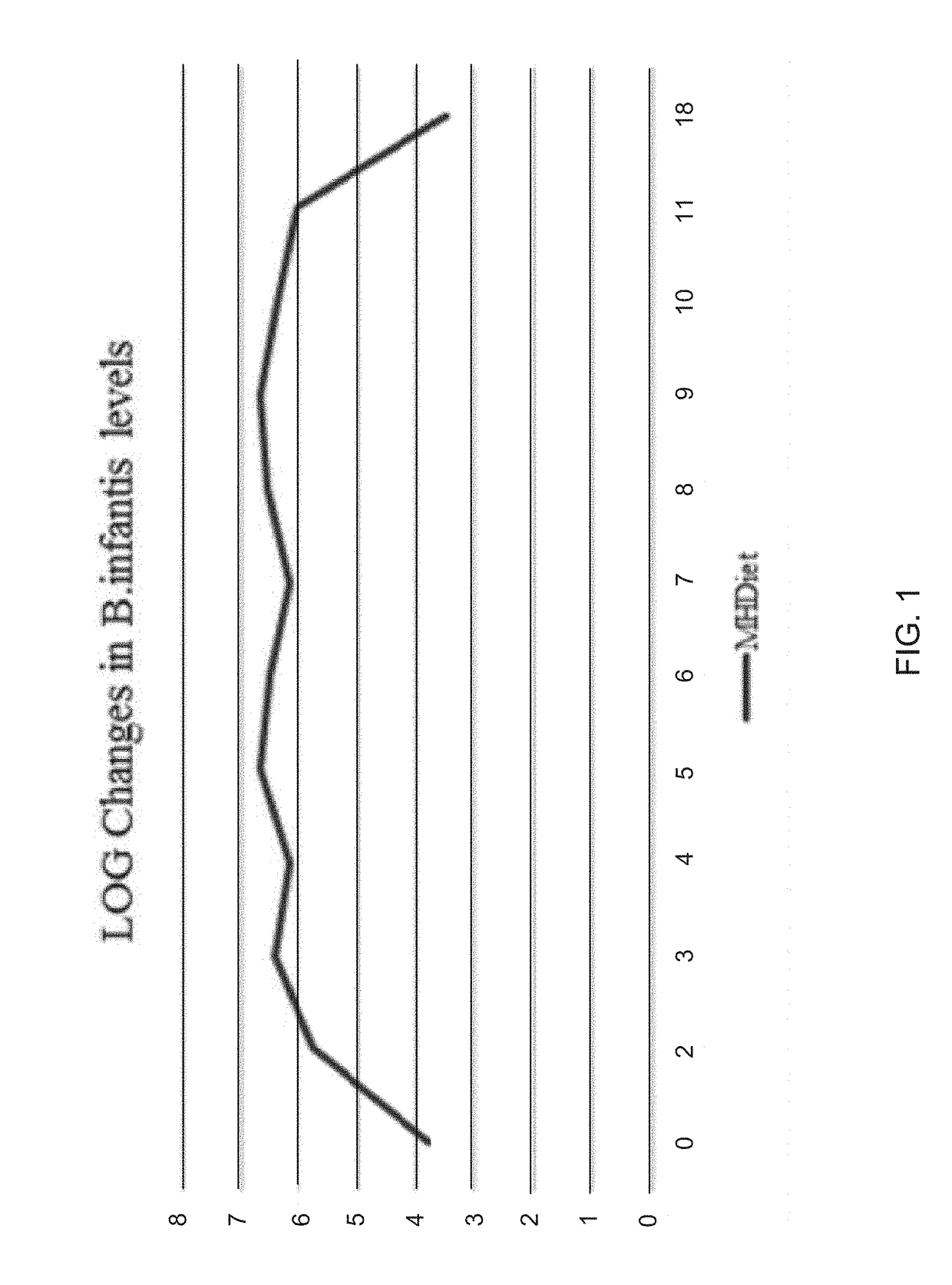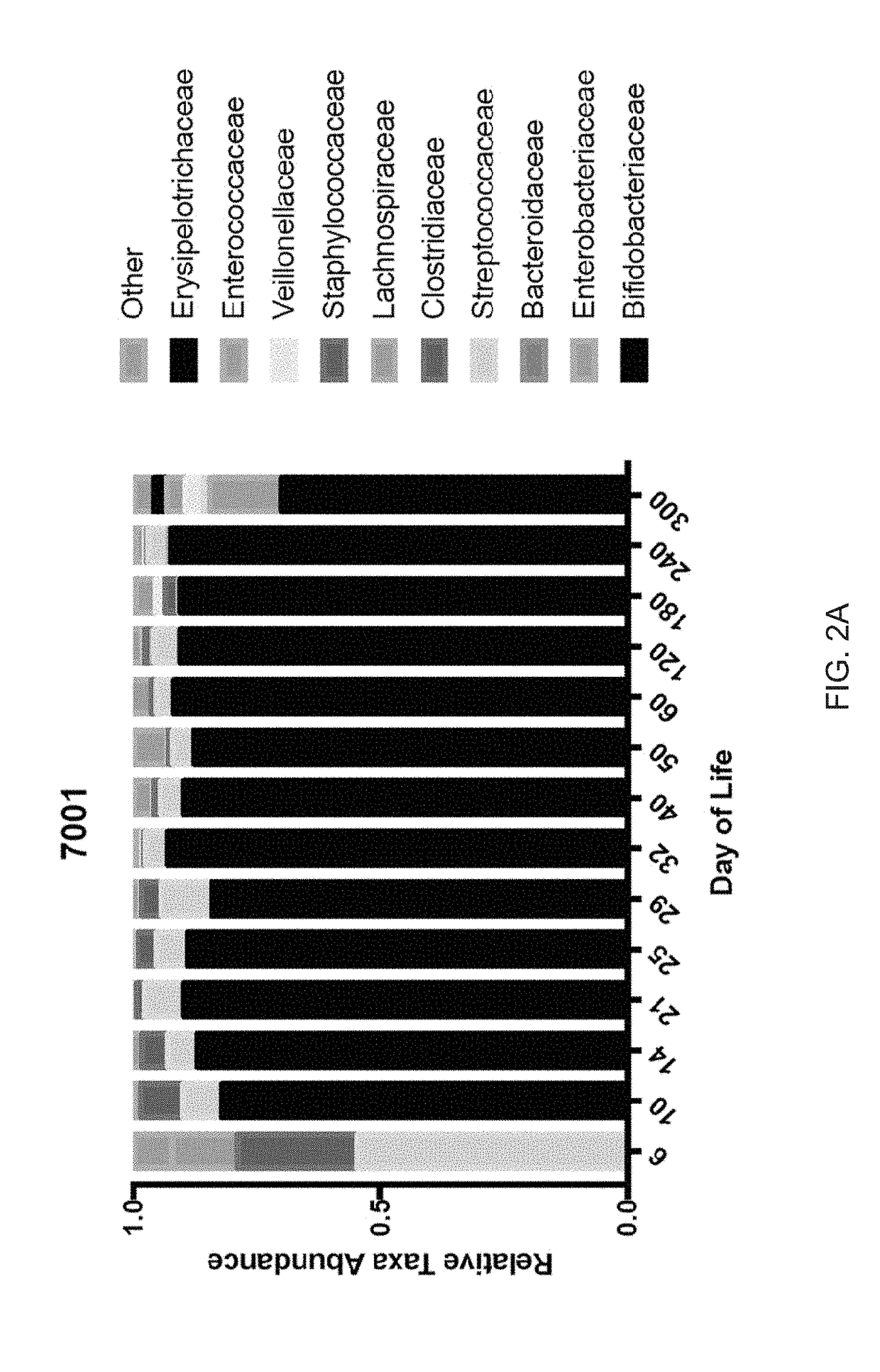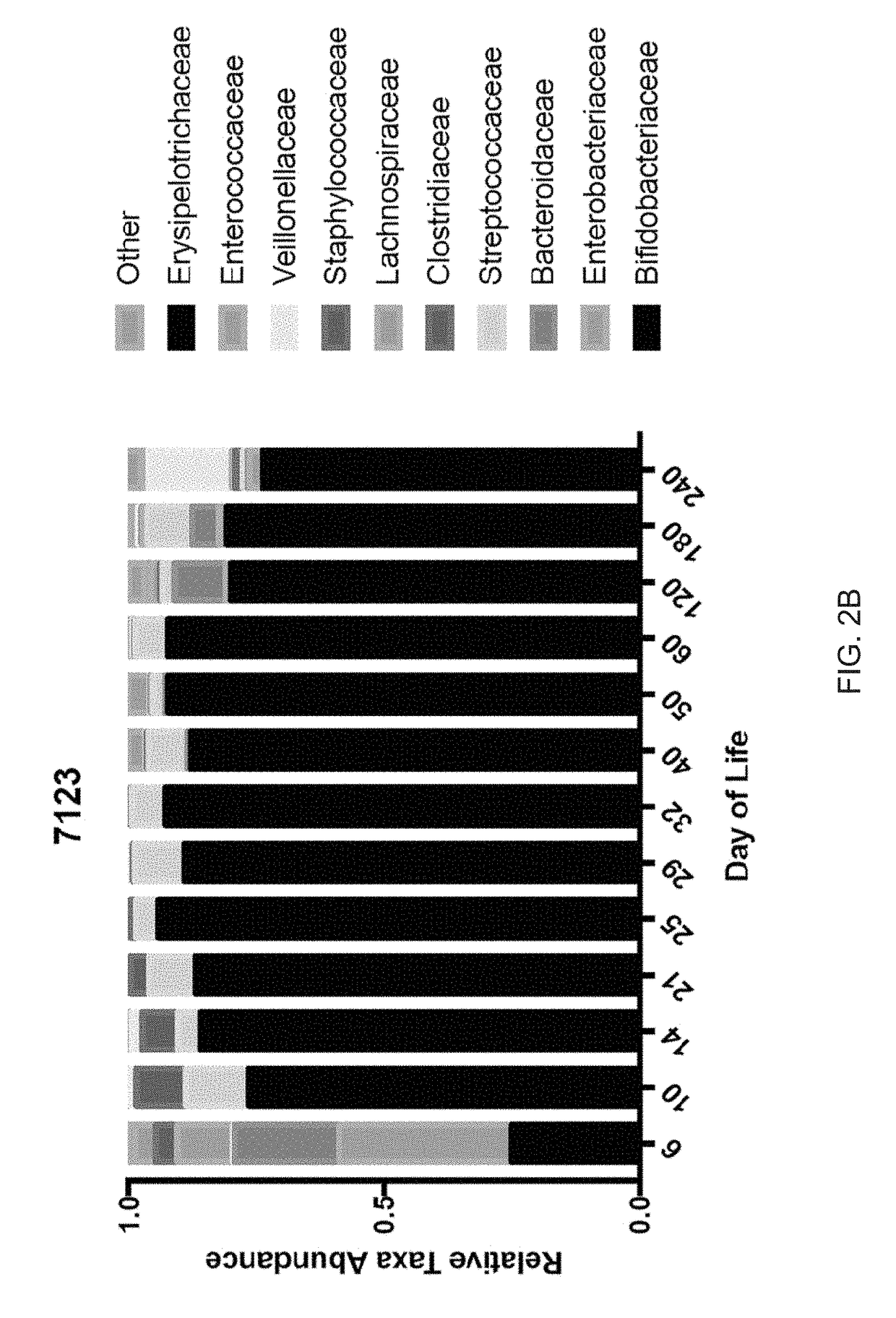Food Compositions for Weaning
- Summary
- Abstract
- Description
- Claims
- Application Information
AI Technical Summary
Benefits of technology
Problems solved by technology
Method used
Image
Examples
example 2
on and Delivery of a Vegetable-Based Weaning Food Composition for a Human Infant that Increases the Microbiome Diversity
[0063]Examples of formulation for weaning food for a breast-feeding infant onto complementary foods including probiotics that support the fiber formulation.
[0064]A. Pea-Based Weaning Food
[0065]A pea puree for a baby is prepared by steaming or boiling peas in a little water for 3-5 minutes and then pureeing the peas with a little of the cooking water using a food processor. The pea puree is then passed through a fine mesh strainer to remove any unpureed bits. Alternatively, a commercial pea-based baby food can be used for the final composition.
[0066]A powder composition of Bifidobacterium longum is prepared by fermentation using processes known in the art, such as Kiviharju et al6. Glucose, yeast extract and 1-cysteine are used for the cultivation of this strain. Fermentation is carried out at 40 degrees C., in a medium containing 35 g / L yeast extract and 20 g / L glu...
example 3
on and Delivery of a Cereal-Based Weaning Food for a Human Infant that Increases the Microbiome Diversity
[0074]A rice-, oat-, or wheat-based cereals are excellent sources of iron and vitamins. Although there is generally little fiber in rice cereal, cereals containing wheat and oats can be an excellent source of dietary fiber with levels of 2-3 g / serving. Because dietary fiber has a major effect on the microbiome, it is important to match the specific dietary fiber to specific probiotics that can aid in the prevention of excessive availability of FSMs than can lead to pathogenic blooms of bacteria in the baby's gut.
[0075]A powder composition of Bifidobacterium bifidum is prepared by fermentation process similar to that of Example 2 for B. longum, and a powder composition of Lactobacillus casei is prepared by fermentation processes similar to that in example 2 for L. crispatus. The final dried powders for both organisms are diluted with infant formula grade lactose to concentrations ...
example 4
on and Delivery of a Meat-Based Weaning Food for a Human Infant that Increases the Microbiome Diversity
[0076]Meat and eggs are indeed perfect weaning foods for a baby. Not only are these animal foods extremely easy to digest compared with cereal grains, but they also supply iron right at the time when a baby's iron stores from birth start to run low, and they are very rich in protein. A chicken puree is prepared by first chopping 1 cup cold and cooked boneless chicken into small 1 inch pieces and placing them in food processor. The food processor is set to puree and the chicken is minced to a powdery mix. The cooking water is added slowly and the mixture is pureed further until a smooth consistency is created. Alternatively, a jar of commercially prepared chicken puree baby food can be used.
[0077]A powder composition of Bifidobacterium breve is prepared by fermentation process similar to that of Example 2 for B. longum, and a powder composition of Lactobacillus plantarum is prepared...
PUM
 Login to View More
Login to View More Abstract
Description
Claims
Application Information
 Login to View More
Login to View More - R&D
- Intellectual Property
- Life Sciences
- Materials
- Tech Scout
- Unparalleled Data Quality
- Higher Quality Content
- 60% Fewer Hallucinations
Browse by: Latest US Patents, China's latest patents, Technical Efficacy Thesaurus, Application Domain, Technology Topic, Popular Technical Reports.
© 2025 PatSnap. All rights reserved.Legal|Privacy policy|Modern Slavery Act Transparency Statement|Sitemap|About US| Contact US: help@patsnap.com



